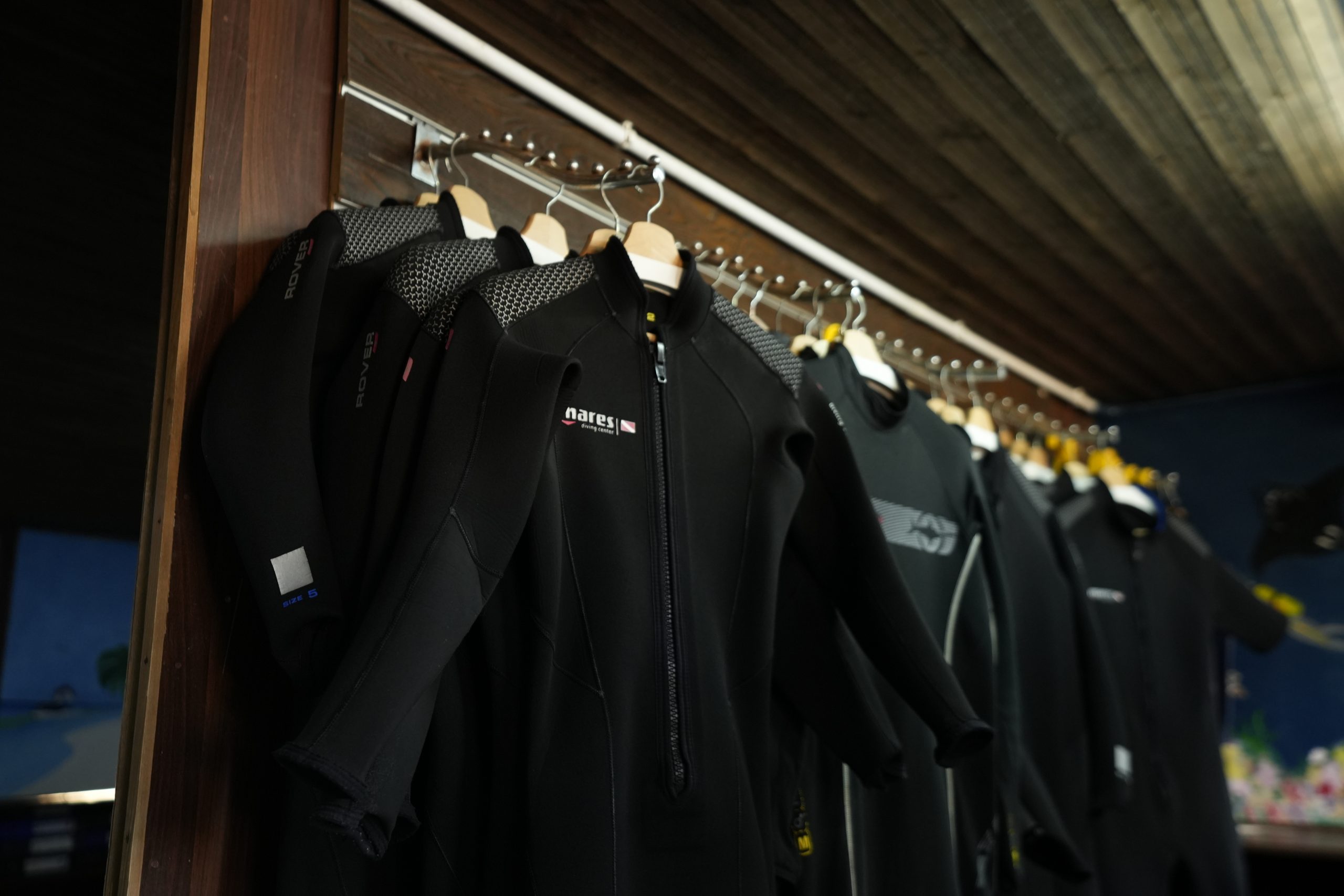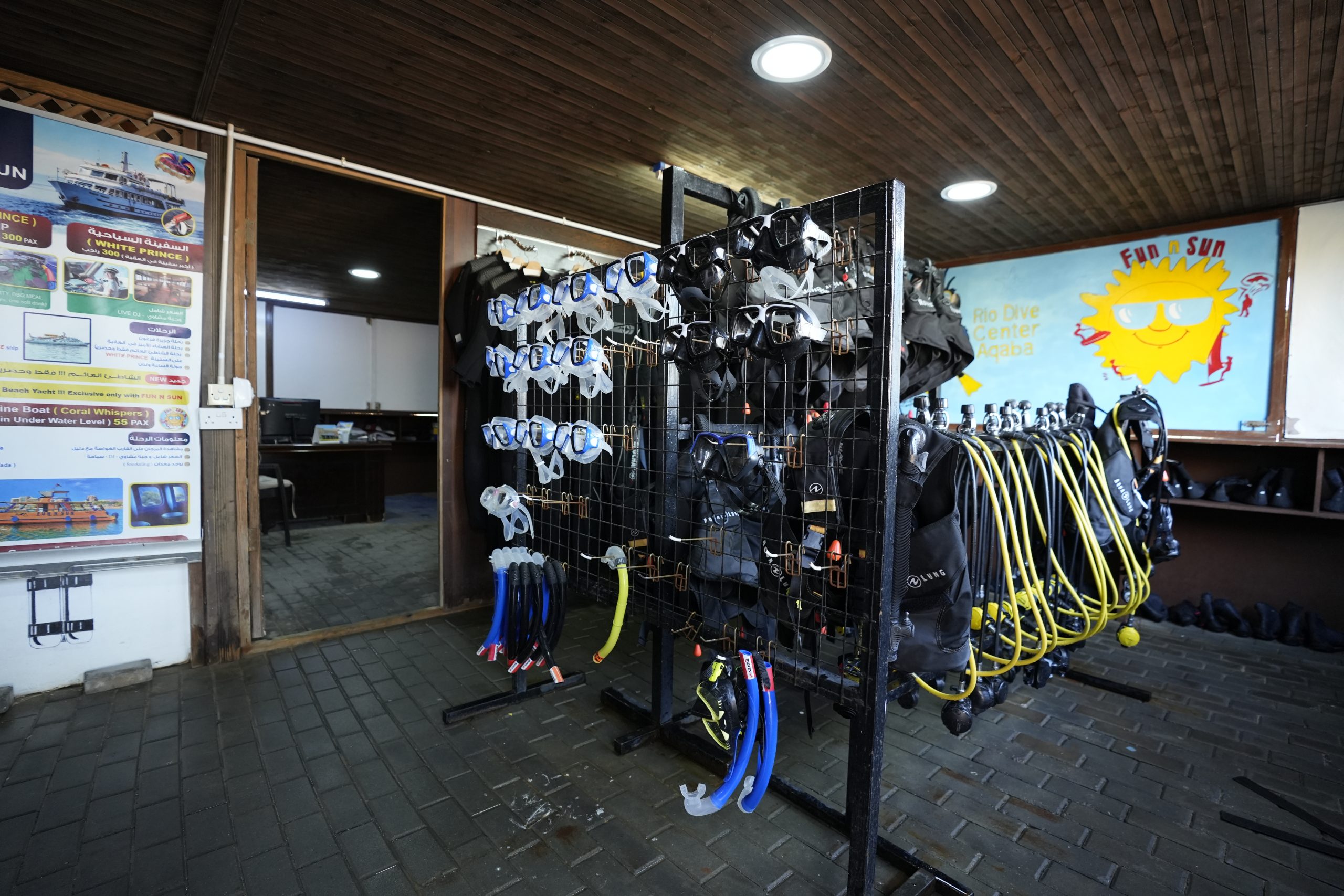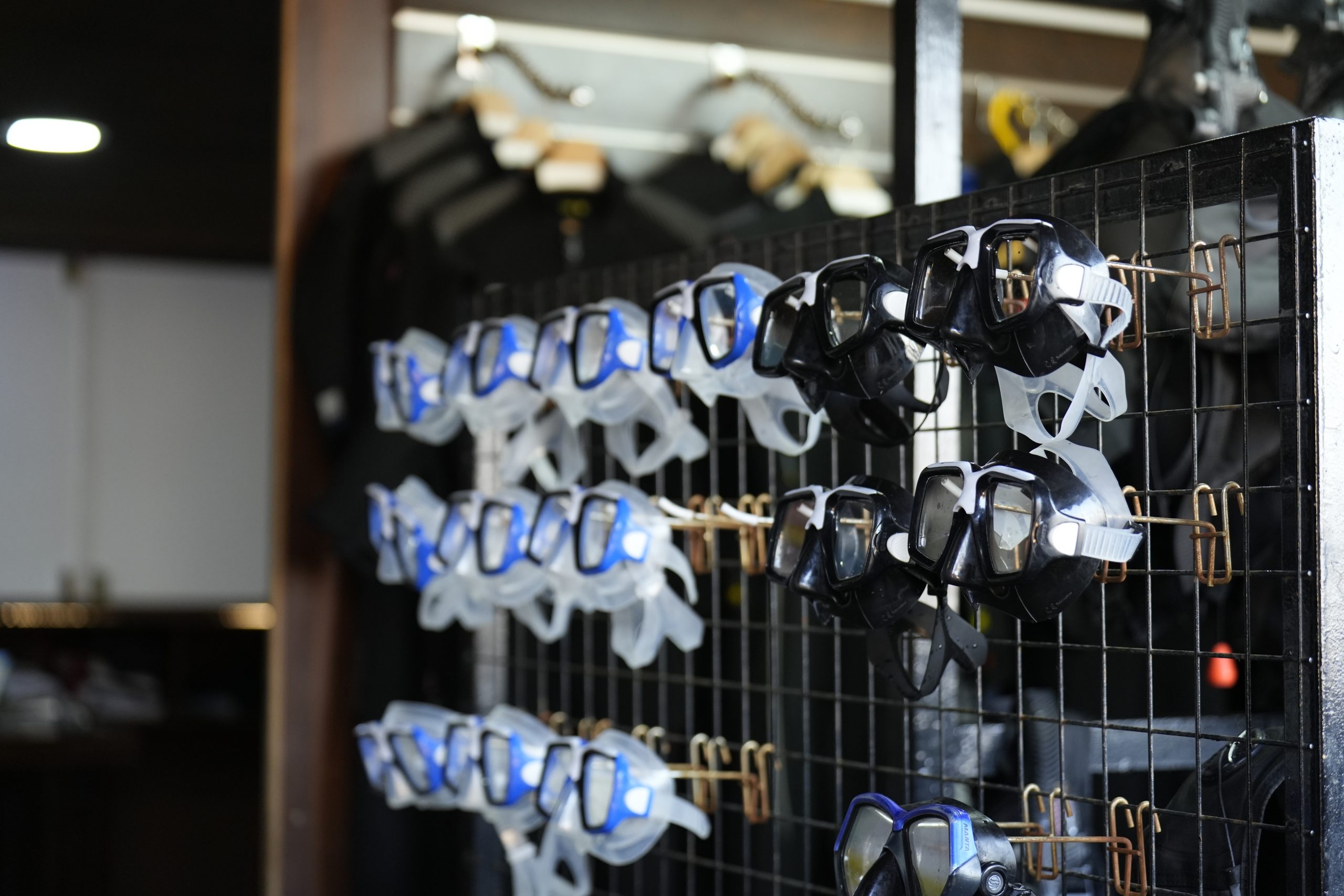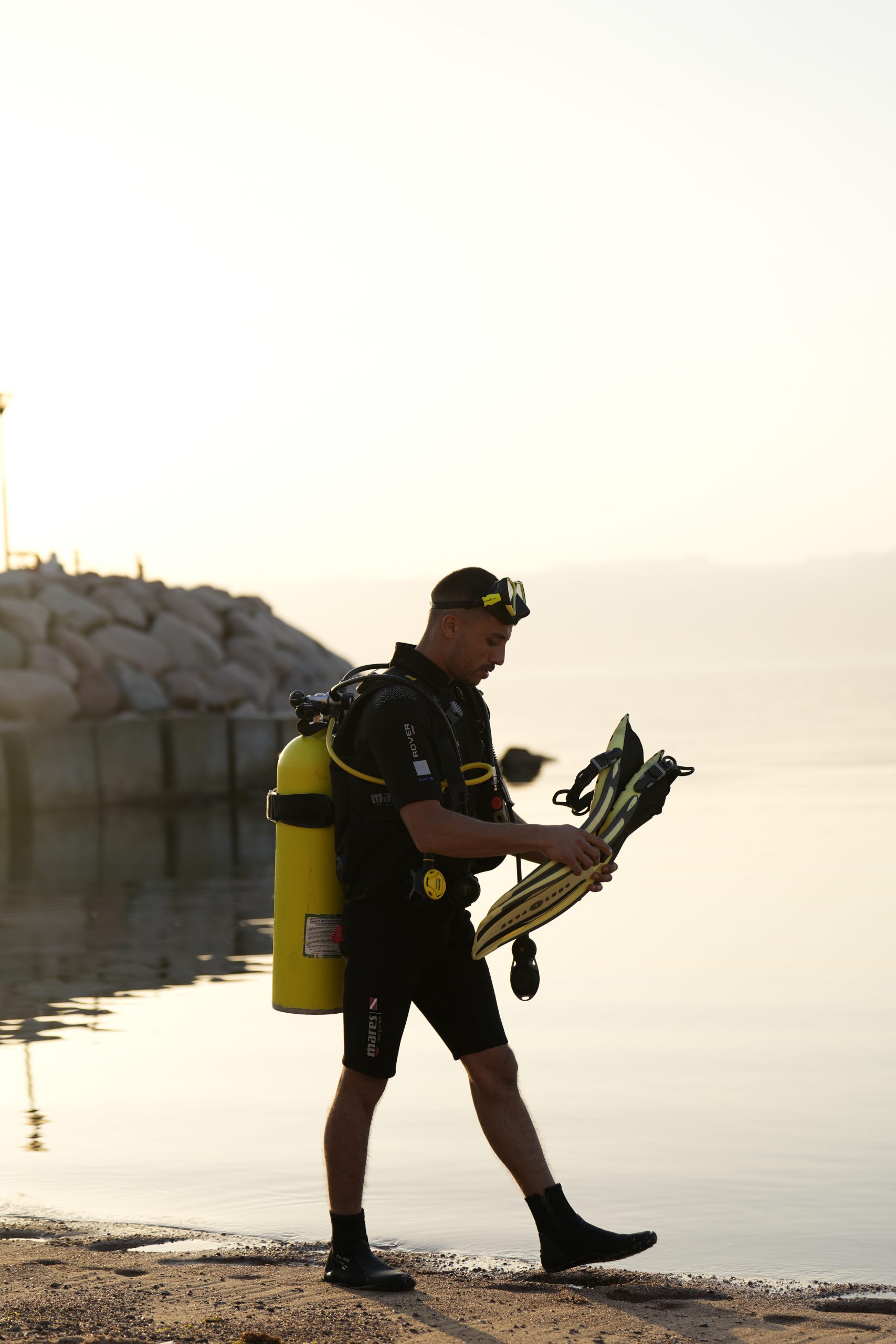Diving Center:
Welcome to our diving center! We are a premier destination for those seeking an unforgettable underwater adventure. Our center is staffed by experienced and certified diving instructors who are passionate about sharing their love for the ocean and all its amazing creatures. Whether you're a seasoned diver or a first-timer, our team is committed to providing you with a safe and enjoyable diving experience. We offer a wide range of diving programs and services, including training courses, guided tours, equipment rentals, and much more. So come and explore the stunning underwater world with us and discover the magic of the ocean.
POWER STATION
Home to turtles, a seahorse, a frogfish and Napoleon fish, this is a great dive site to spot something amazing.
The Power Station does not boast an elegant name but, it is a spectacular wall dive, conducted as a drift from north to south. Sharks and other large pelagic creatures are often spotted here. There are several Humphead Wrasses and some large Moray Eels. The wall and drop-off are spectacular and there is an abundance of life to entertain you on the reef slope and in the shallows. If conducting a technical dive requiring decompression, this makes the required stops a bonus rather than a chore
FIRST BAY NORTH
This is a drift dive site with the entrance south of the marine science station. This site can be explored as deep or as shallow as you like within the marine park’s restrictions, and offers you the chance to see turtles and rare frog fish.
The dive at the north end of first bay has a sandy plain with coral patches and a sloping reef from 12 m down to 30 m+. Features of note are fantastic coral pinnacles covered in red soft corals at the north end of the site – to find this, look for the big table coral and head north past the old fish cage (now covered in sponges), keep on a straight line and you cannot miss it. There is a pinnacle at 15cm which is a long narrow pinnacle sticking up from the reef at a slight angle, this can be used as a navigation aid if you are approaching the site from the shore, you will find it due west of the gap in the fringing reef.
FIRST BAY SOUTH
Deep in the valley lives a Napoleon fish, which is often seen when divers swim next to the reef.
Diving south from the mooring you will find the cabbage-looking coral at 18 m on the corner of the reef.
Follow the wall back to the north, and then follow the counter of the reef, you will pass over a wide expanse of coral bushes and arrive to a sandy gulley. Follow this back up to 12 m and work your way back across the reefs to the mooring. In this area, you will find lots of Cornet Fish changing in waves of color as you watch them hunt the smaller fish. Watch out here for the Eight Lined Wrasse. You can also find lots of Parrot Fish. This dive is a nice colorful dive with a lot to see for those who want it.
RAS AL YAMANYA
This provides an excellent training area for divers with standing depth down to 5 m on a flat sandy bottom – here you can practice without any danger of damaging corals.
KING ABDULLAH REEF
This site is characterized by a round mound of reef called ‘the crown reef’ with a huge fan coral on top.
Named after king Abdullah II, this is a popular reef for divers, there is a beautiful fan coral on top of the reef and here you get large shoals of Pennant Fish, and Torpedo Rays are also common here. You usually start the dive exploring the reef with the fan coral and then cross over the gulley and make your way south along the reef. Turn north when the air supply is dwindling and come back to the shallows where you will find shoals of Fusiliers ending up at the mooring. In addition, Hawksbill Turtles are often spotted in this site.
BLACK ROCK
From the mooring buoy, swim past the pinnacle to the reef about 18 m, then turn north crossing the sandy gulley and picking up the reef slope. Here you can pick your depth from 15-30 m. It is best at about 25 m on the way out. Follow the reef north at this depth then come up the reef to about 12m, you will be somewhere near the cabbage coral at 14 m, you can then work your way back between 9 and 12 m. There are some nice pinnacles close to the fringing reef, you will pass plates put down for coral growth research, then you know you are nearly back. Watch out for turtles on this dive. Current can be up to 1 knot.
RAINBOW REEF
Named because the reef is shaped like a rainbow, it starts at around 6m and drops down to 18m on the top of the reef. A deeper gulley runs down the north side of the reef forming a nice wall along the side of the reef. There is a telecommunications cable that runs over to Egypt running down this gulley. This reef makes a particularly good night dive where you will find Spanish Dancers, lots of lobsters and Moray Eels of all the rainbow colours. So if you want to dive “Rainbow Reef”, then do it at night!
“CEDAR PRIDE” WRECK
The Cedar Pride was scuttled for divers on November 16th 1985. The ship now lies on her port side across two reefs; the soft coral growth on the masts is fantastic. Those with experience can explore its interior as it still is very stable. For a nice profile, descend by the mooring and work your way along the bottom of the wreck, come around under the bow, then along the keel to the swim through, then ascend to the main mast and accommodation area, stay at this depth and work your way to the bow again, then return along the top edge of the wreck and complete a safety stop on the mooring chain.
TARMAC FIVE (BARGE WRECK)
This wreck was scuttled in 1996 after Alcatel had finished laying the electrical cables to Egypt. It lies not far from the Cedar Pride and when it went, it landed over the corner of an old sunken fishing boat that has been there since the 70’s. Although the wreck itself is not much to look at, it is a host to a good variety of marine life; blue spotted Stingrays, Frogfish and a good deal more. The inside is full of banded coral shrimps! Take a tour around here when you dive the Cedar Pride. Do these at the beginning of your dive as it is deeper than the Cedar Pride.
JAPANESE GARDEN
This drift dive will take you along the reef gardens from the Japanese Garden to the pinnacles from Gorgone 1. The shallow dive will take about 50-60 min. The deeper dive is 60-100 min.
Its name reflects that it would be all rocks and stones-nothing could be further from the truth. This place has amazing flora and fauna and all at shallow depths.
It is very popular with snorkelers and is known as one of the prettiest areas in Aqaba. It is a good dive for all, as it has Hawksbill Turtles, shoaling Barracuda, shoals of Sergeant Majors and Fusiliers plus wonderful coral formations.
GORGONE I
This is a beautiful solid reef characterized by three large pinnacles. Around these pinnacles you will find an abundance of marine life.
This site is an excellent shallow dive in an area covered in coral. There are 3 pinnacles, each with its own ecosystem. The central pinnacle boasts a busy cleaning station. Down the coral slope, there is a large Gorgonian fan coral the site is named after, and to the north you will find a series of table corals, and you can also enjoy the Hawksbill Turtles that frequent the area. Around the northern pinnacle are a shoal of Big Eye Emperors and a large shoal of Sergeant Major Fish. Here a deep gulley full of Fusiliers drops off towards the Japanese Garden. The mooring is to the south in a sandy patch at 15 m. The North West of the fan coral is currently under survey using a down line of the marine park boundary buoy in 24 m.
GORGONE II
Gorgone Two is one of the amazing sites in Aqaba with its wonderful coral maze at the beginning of the dive and with a fan coral at the end. Colorful fish are swimming in between. In the grass area, you’ll even have a chance to spot seahorses.
There is an interesting reef to explore in every direction. Huge shoals of Fusiliers are common here and the occasional Hawksbill Turtle. If you look into the reef creases you will find many Moray Eels. Just above the fan coral, there is a pinnacle on the reef that can be used to locate the fan coral which sits on a small coral outcrop on the sand away from the reef. Lionfish abound in this site as do Blue Tang and other Surgeon Fish.
SEVEN SISTERS
The American M40 tank was scuttled in 1996. Now many species are to be found inside and around the tank as well as around the Seven Sister pinnacles that are close by.
This is a wonderful shallow dive that you can do in a little over an hour while observing the marine life or taking pictures of it. There are two sets of pinnacles, which are the Seven Sisters and the Fairy Ring, and each has its own unique ambiance. You will find shoals of Fusiliers everywhere. You can also travel another 60 m south from the Fairy jetty or take a boat dive from the mooring at Olivers Canyon, excellent for novice divers and also for the experienced ones who have been to many deep dives.
NEW CANYON (TANK)
The American M40 tank was scuttled in 1996. Now many species are to be found inside and around the tank as well as around the Seven Sister pinnacles that are close by.
Hercules wreck C-130
EEL CANYON
YELLOWSTONE REEF
BLUE CORAL
KIWI REEF
MOON VALLEY
PARADISE (our house reef dives)
AQUARIUM
CORAL GARDEN
Named because the reef is shaped like a rainbow, it starts at around 6m and drops down to 18m on the top of the reef. A deeper gulley runs down the north side of the reef forming a nice wall along the side of the reef. There is a telecommunications cable that runs over to Egypt running down this gulley. This reef makes a particularly good night dive where you will find Spanish Dancers, lots of lobsters, and Moray Eels of all the rainbow colors. So if you want to dive into “Rainbow Reef”, then do it at night!






